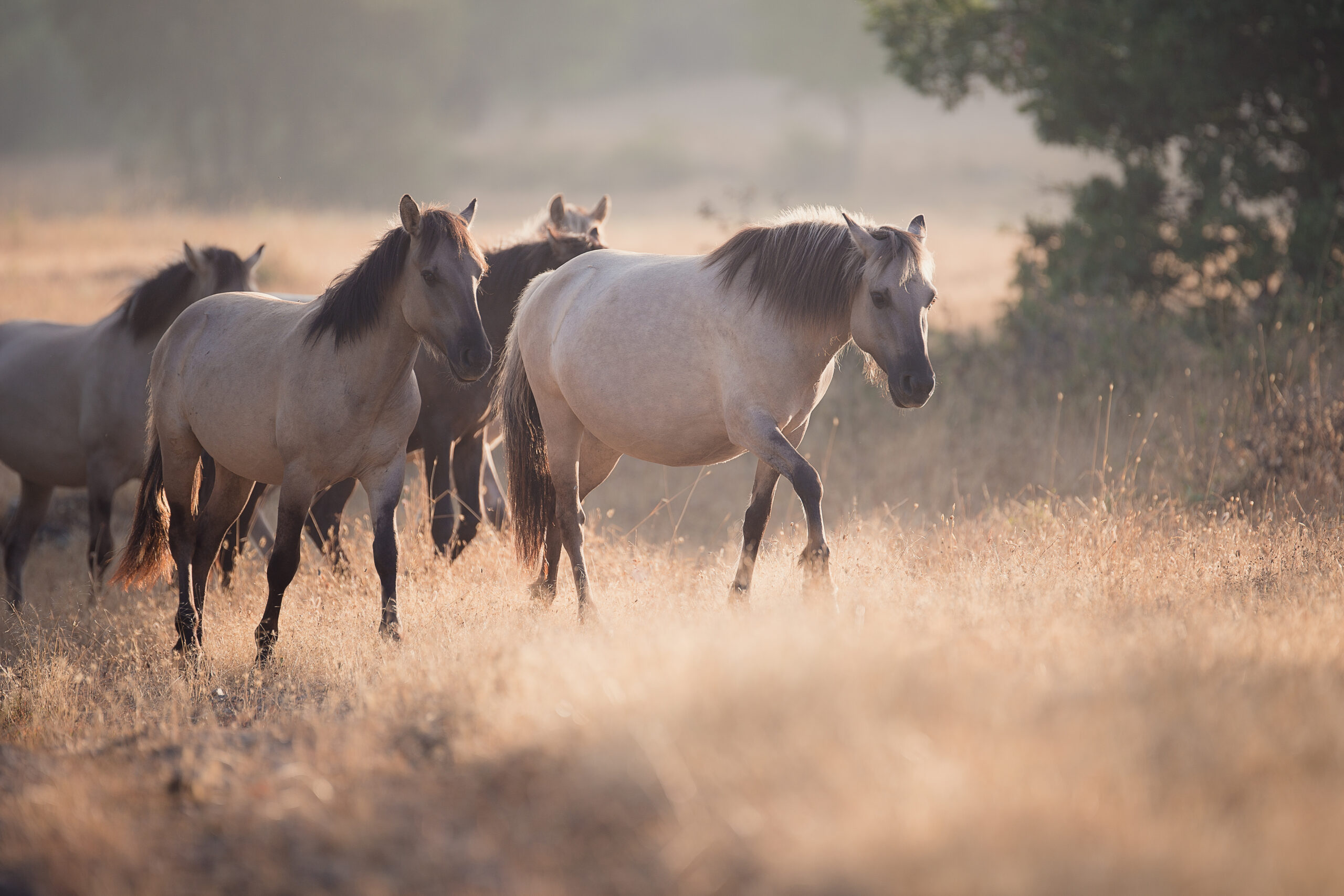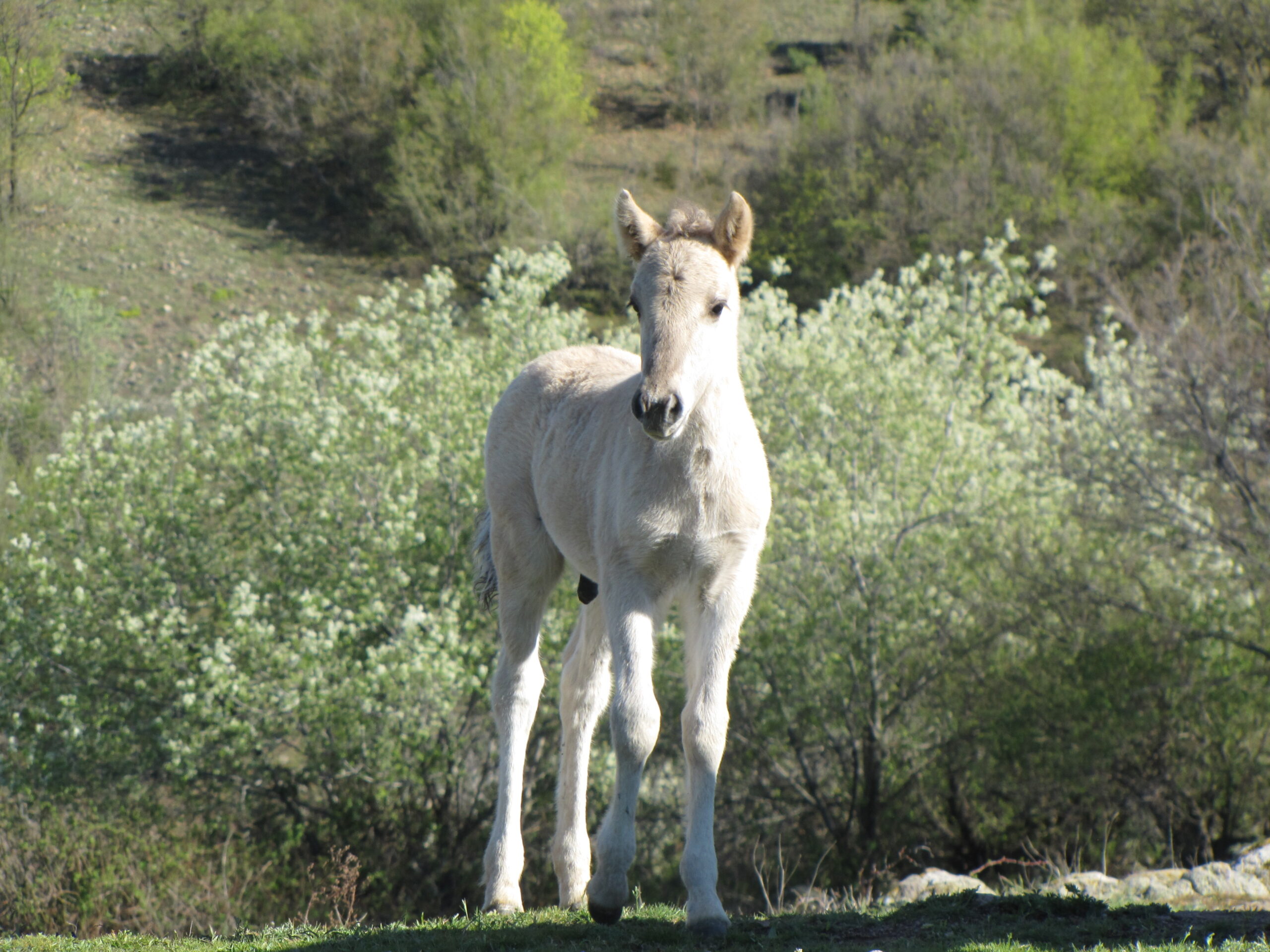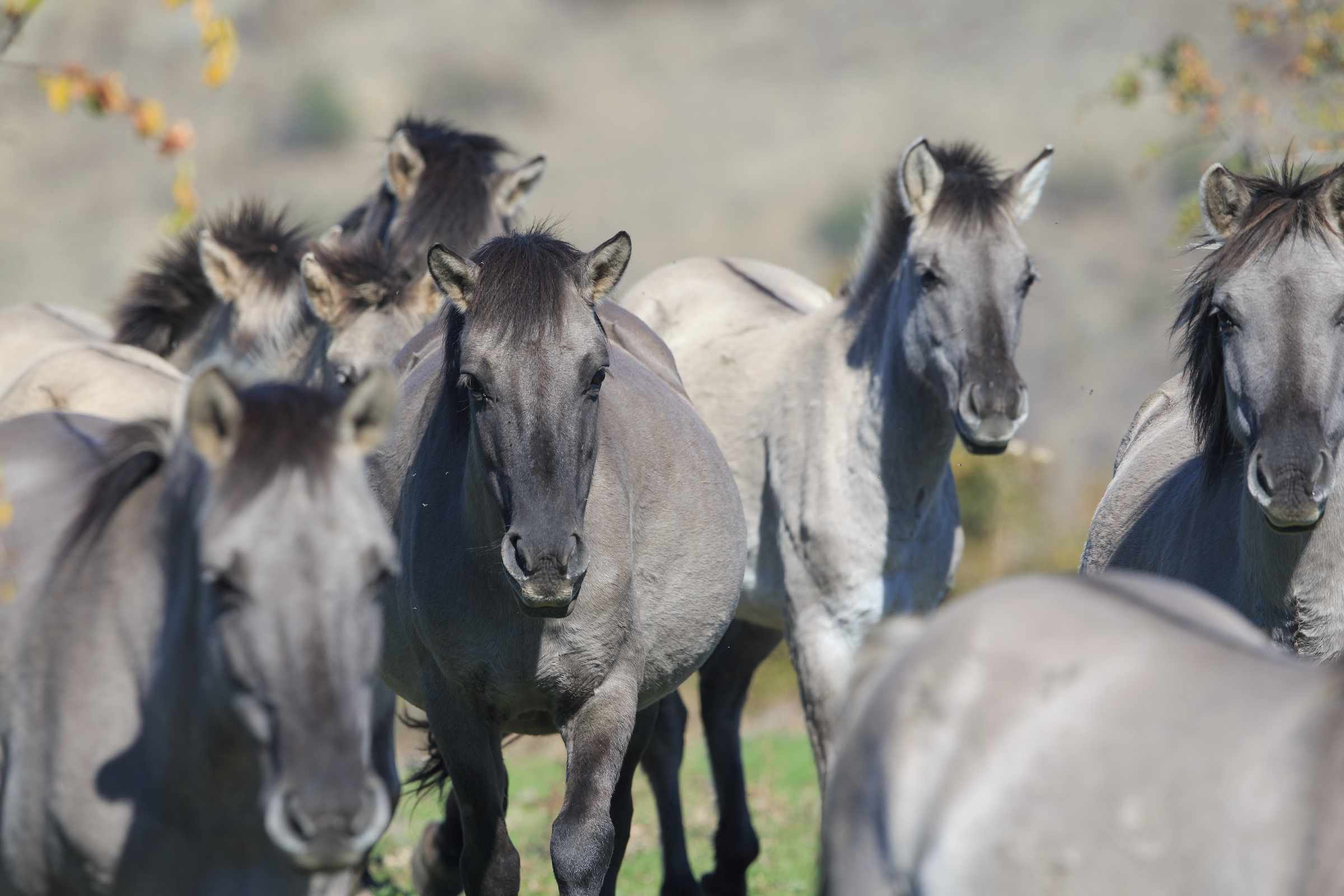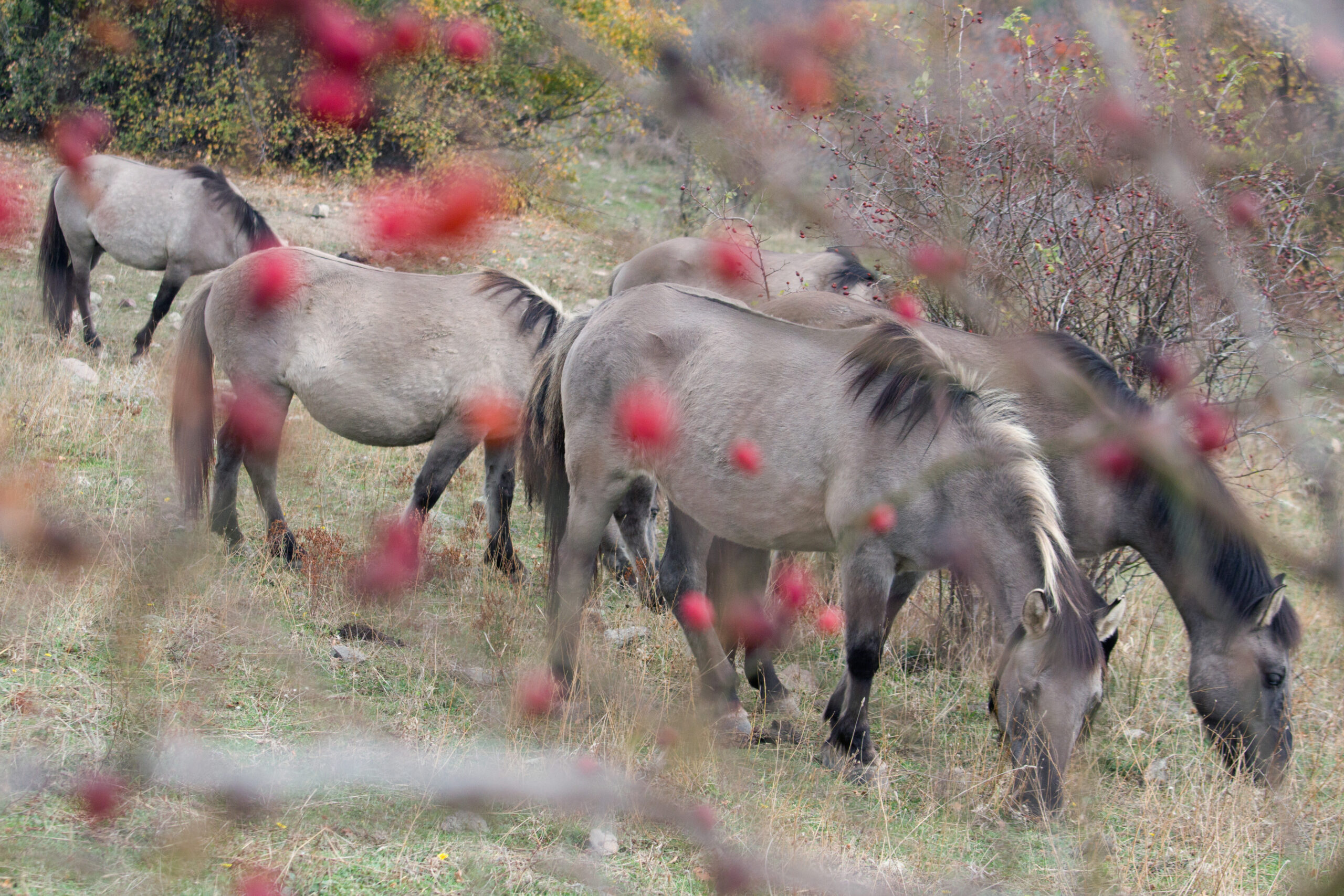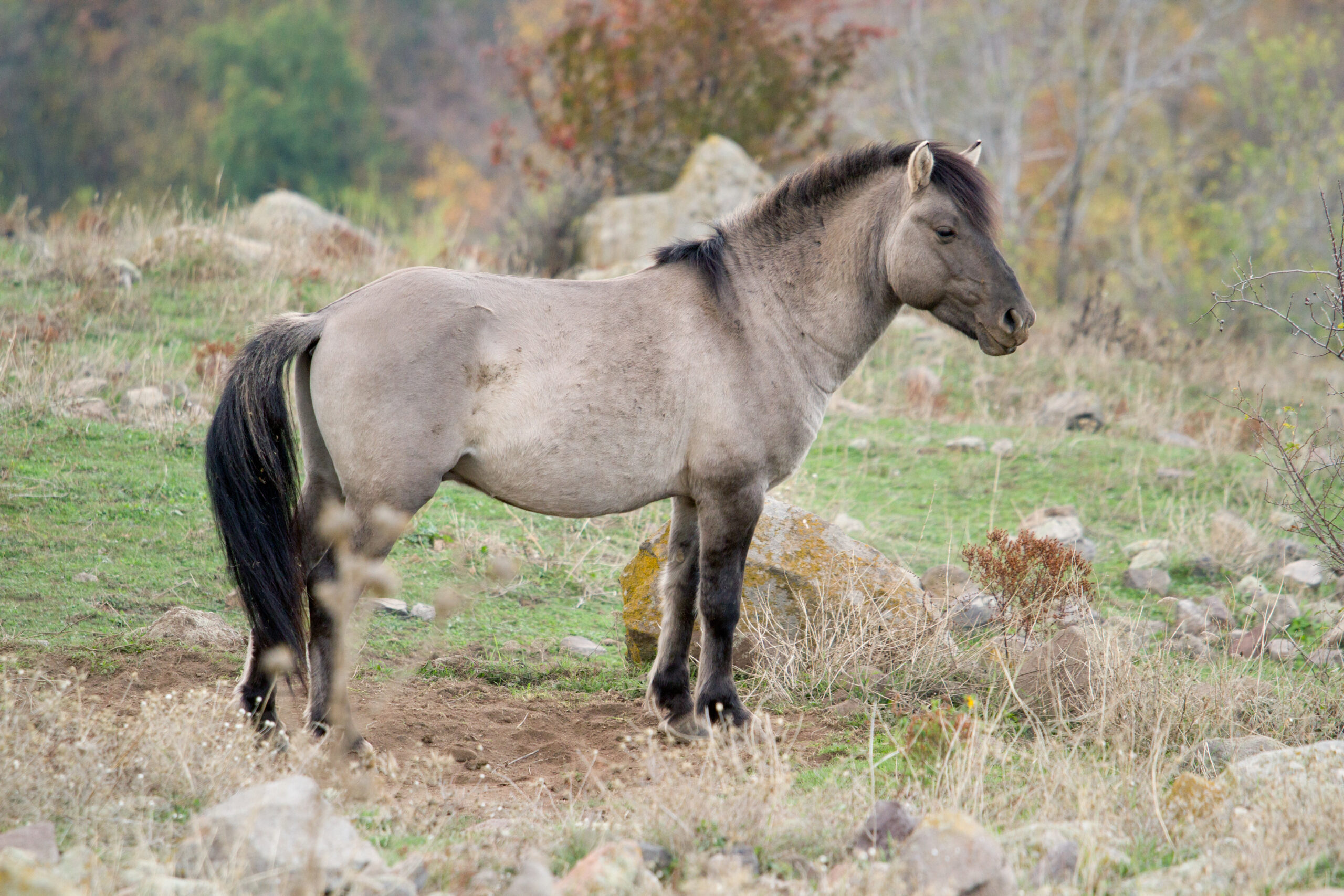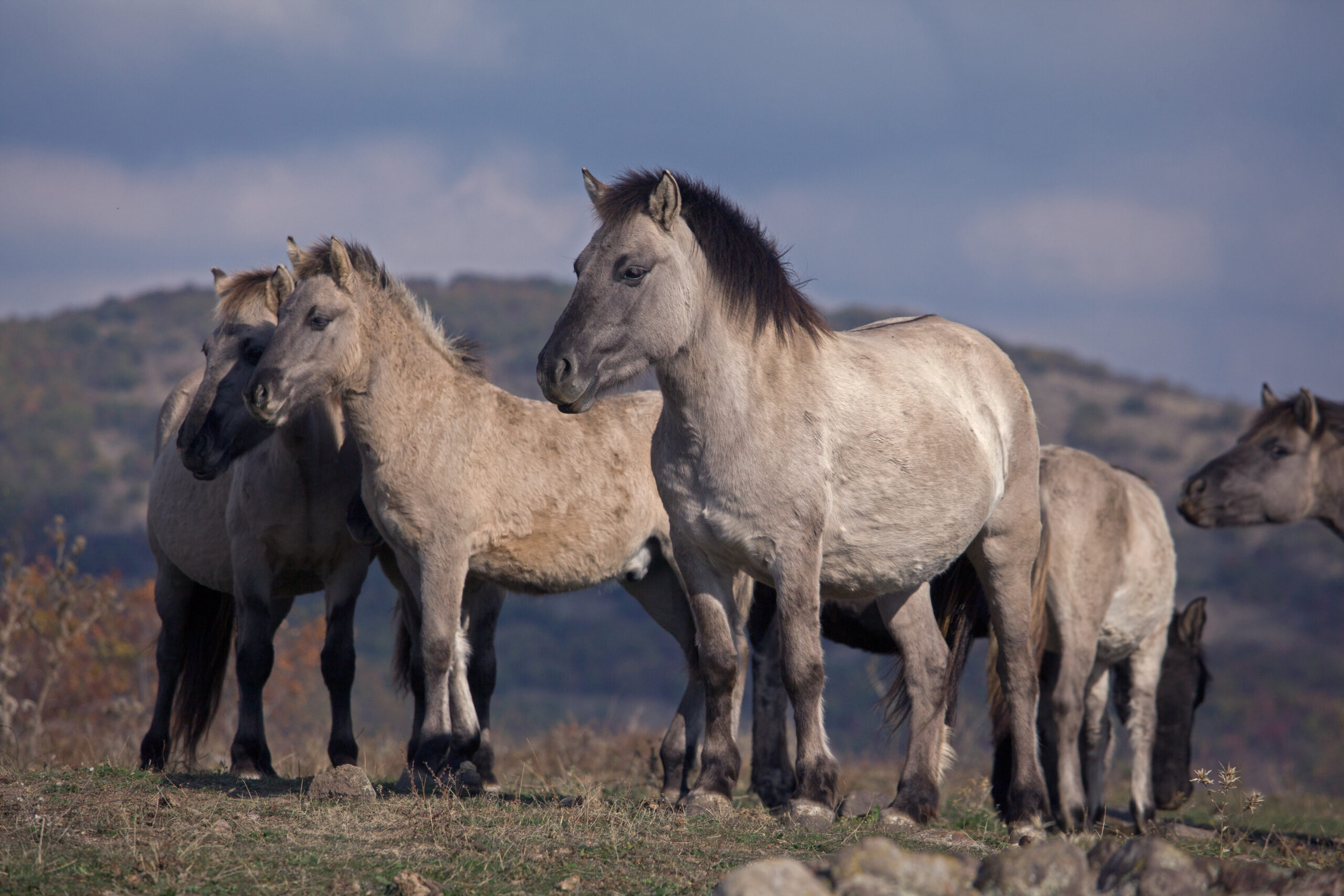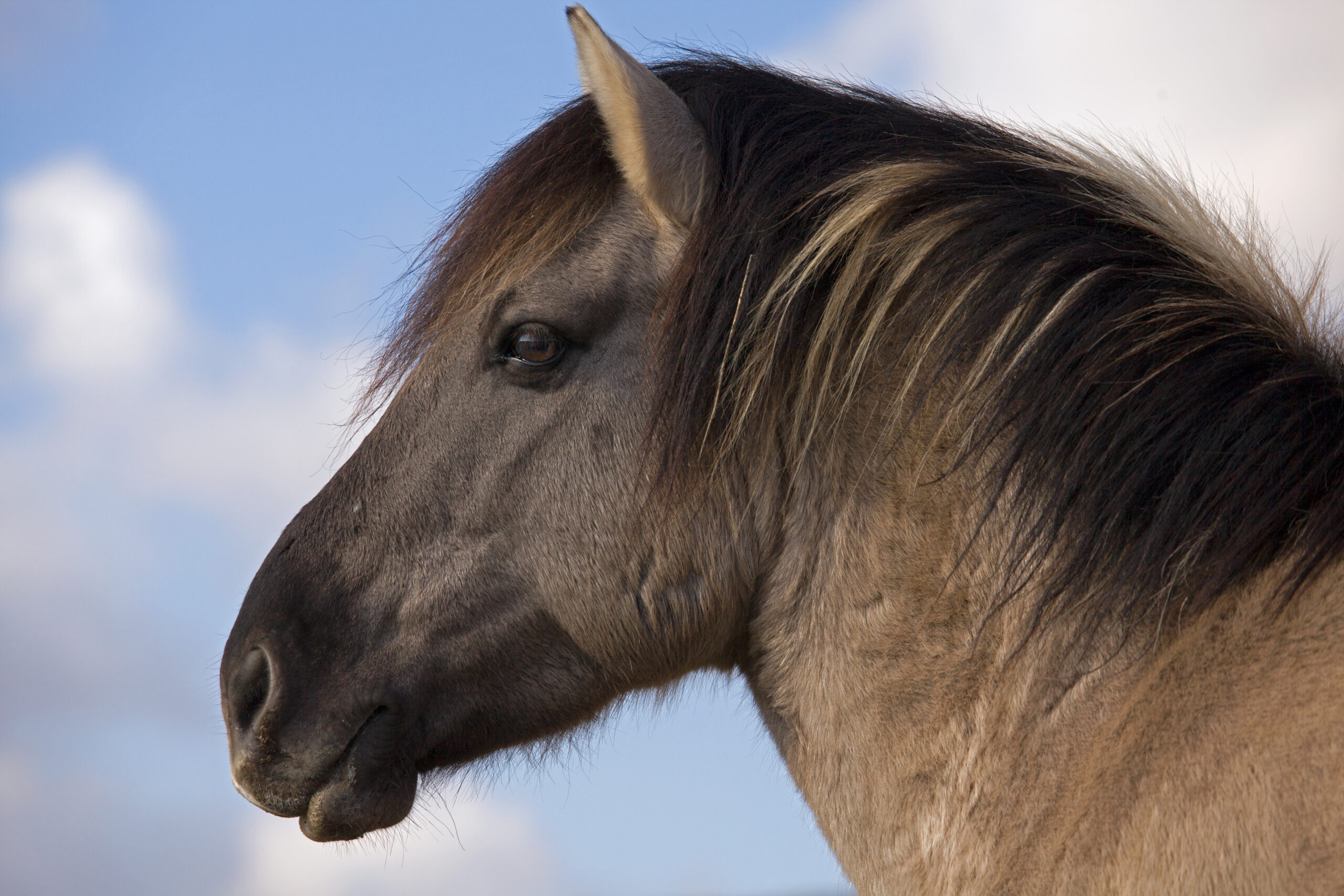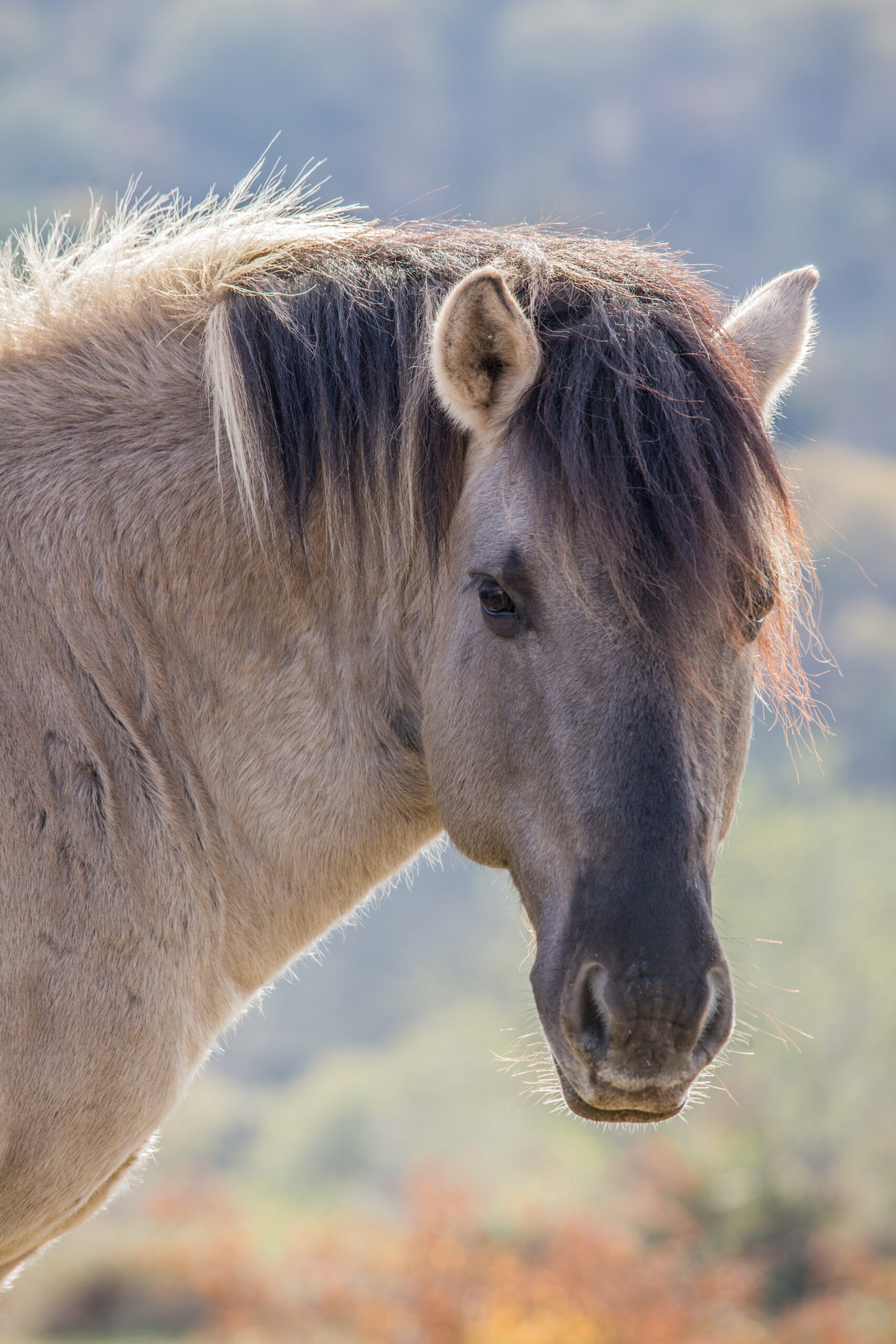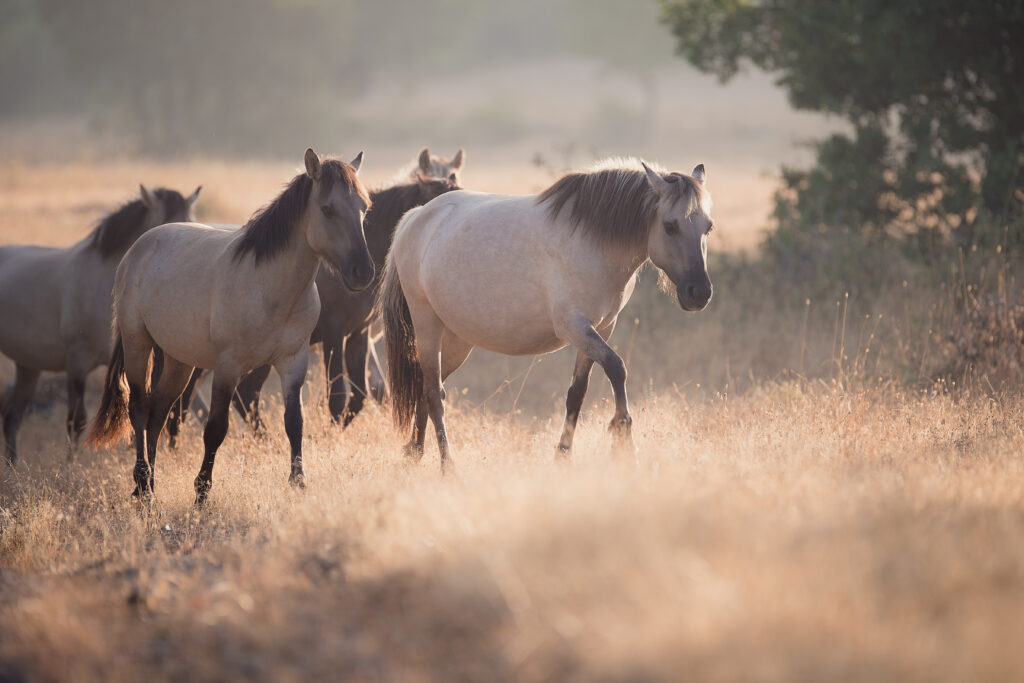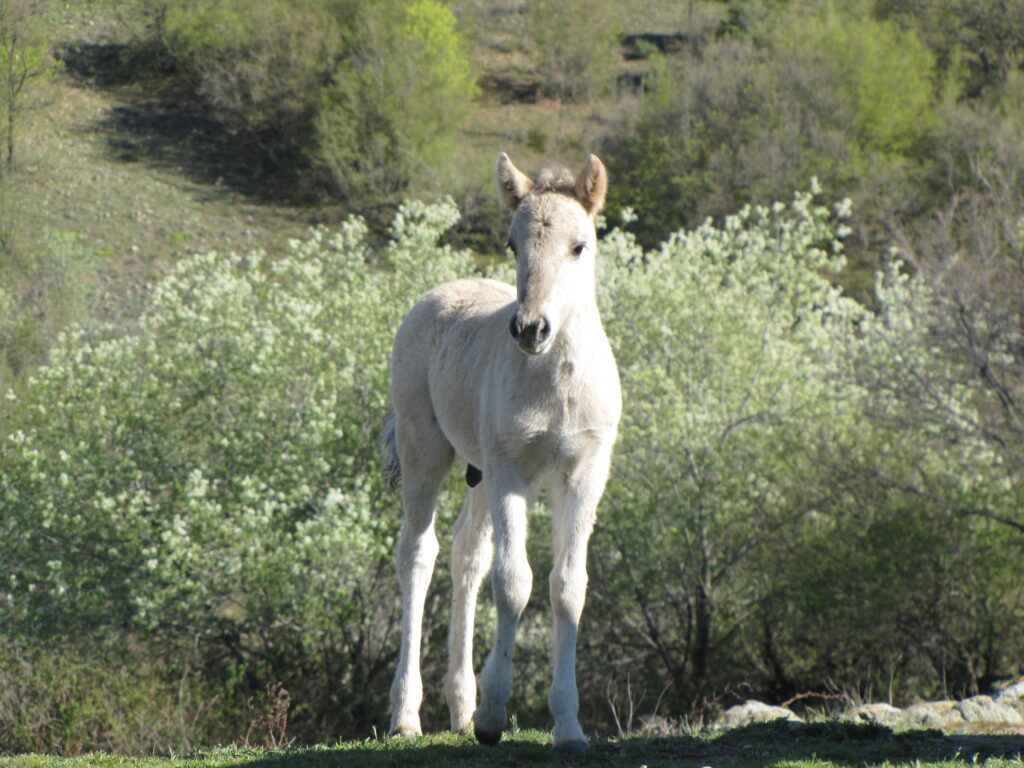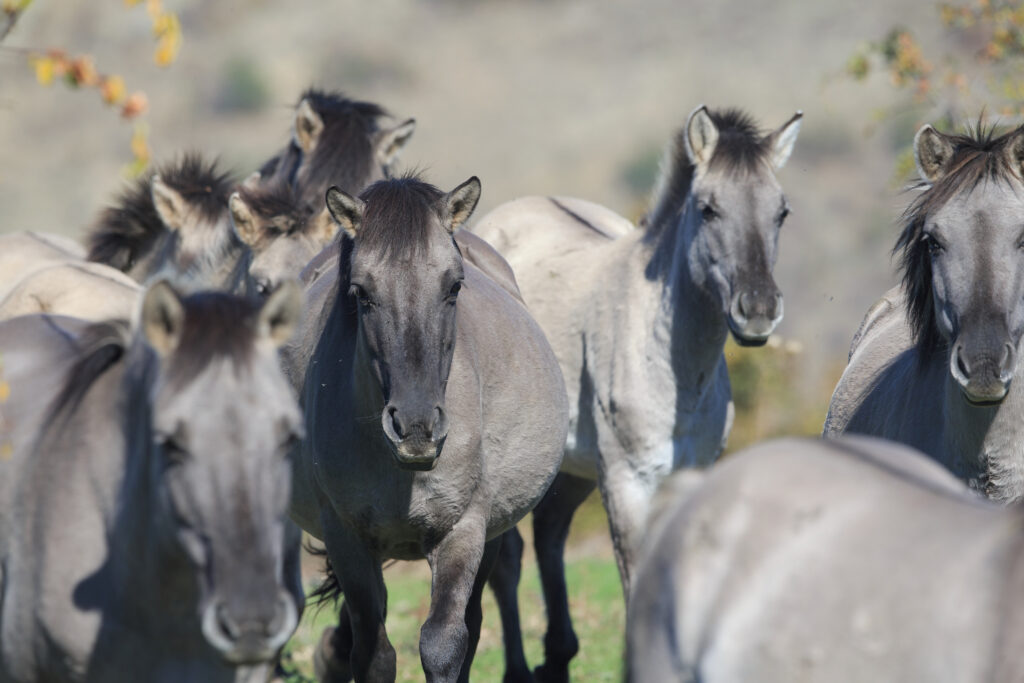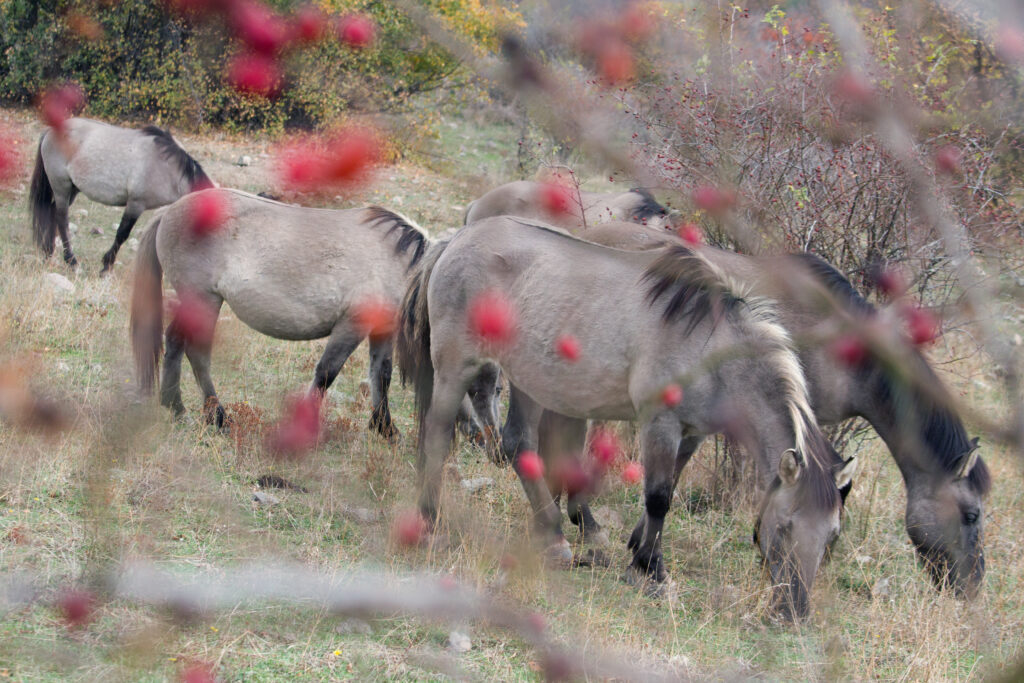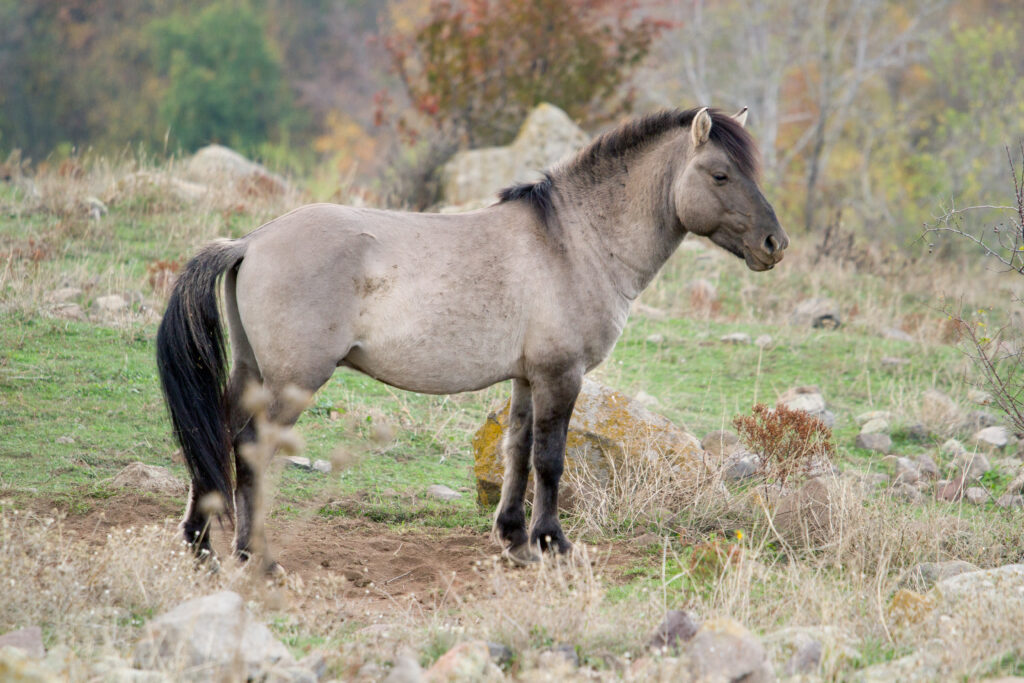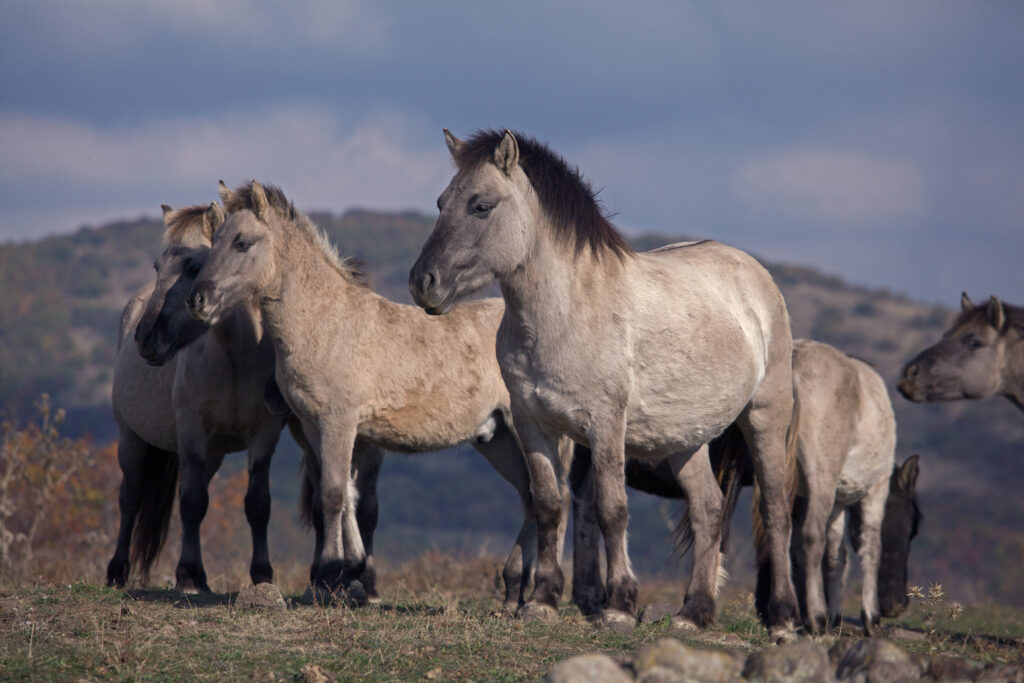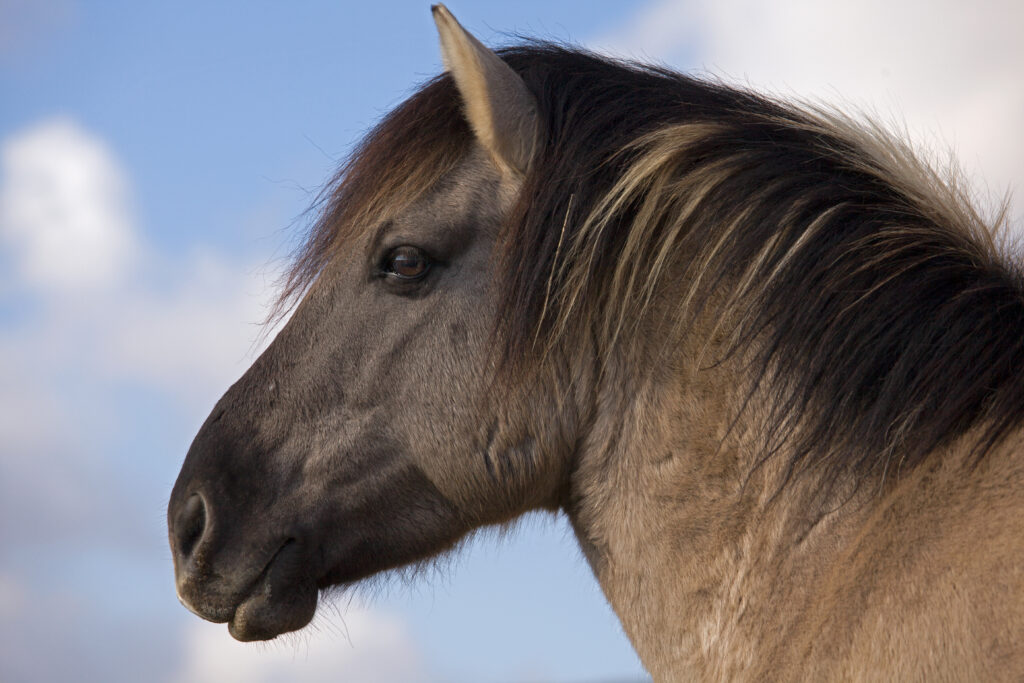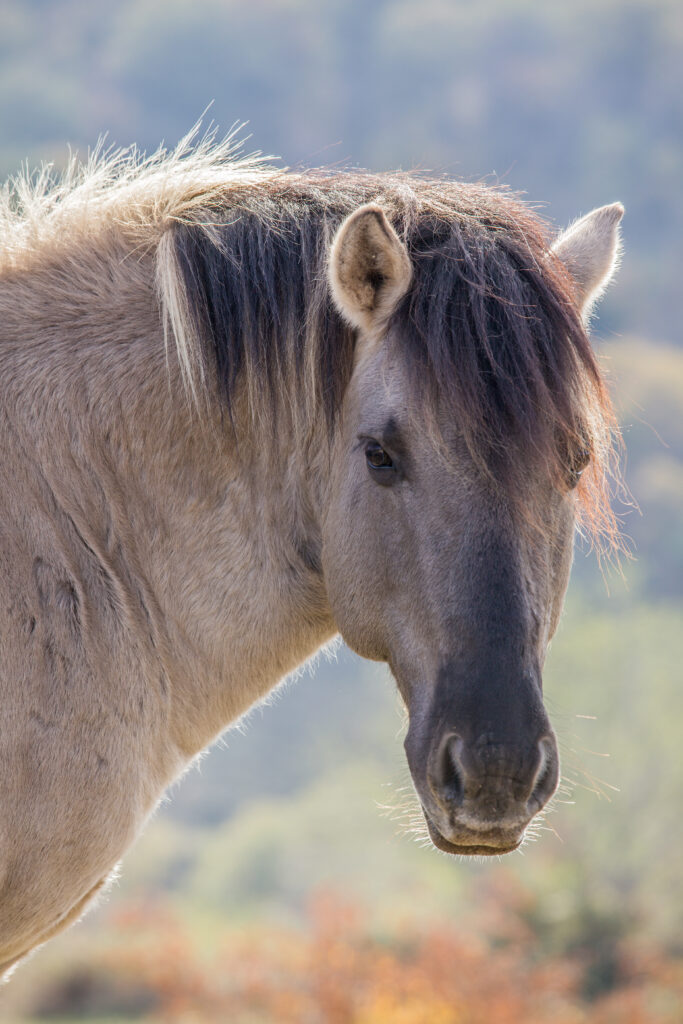Konik
The feral Konik (Equus caballos), that are now roaming free in Rhodope mountains in Bulgaria, is a “recovery” of the Tarpan (Equus ferus ferus) and also known as the Eurasian wild horse. The look-a-like Tarpan that is reintroduced in Bulgaria is also known as Konik (Polish for ‘little horse’). This breed originates from Polish Tarpan re-breeding projects.
In Spain, France and Scandinavia there are cave drawings of horses that are considered to be Tarpans. Also in southern Russia there are artefacts fro mthese ancient horses. In Bulgaria palaeontologists have found Tarpan bones, which are proof that this wild horse once lived here as well.
Tarpans grew extinct in the wild in the end of the 19th century with the death of the last wild mare in Ukraine during an attempt for her capture. The last tarpan in captivity died in 1909 in a zoo in Russia. Most probably by the end of its existence the subspecies consisted mainly of feral domesticated hybrids and even purely domestic horses.
Even though the European Wild Horse is considered extinct since the beginning of the 20th century, its genome is not lost – it still survives in a few ancient, primitive horse breeds. Scientific research on horse genetics led to a change in the widespread belief that wild horses have been irrevocably lost.
Since the 1930s several attempts were made for the restoration of the extinct tarpan – through selection of domestic horse breeds that were crossbred with wild horses in the past. The selective crossbreeding of individual animals that displayed the closest resemblance with the Tarpan’s physical description led to the creation of several breeds of horses, all close to the Tarpan phenotype.
These man-created wild horses have amazing features: resilience to drastic changes in the climate, high fertility, rare miscarriages, strong immune systems, adaptation for finding food in the wild and easy survival without help from humans.
Tarpans are resilient horses with highly evolved social behavior. The social groups – herds, – in which they live, have successful strategies to repel predators such as wolves and to protect both their adult and young individuals. Tarpans are calm and quiet and are inquisitive towards humans.
The colour of the horses’ fur – grey to grey-brown – makes it easy for them to blend in with the surrounding background. They have dark mane and tail, with some individuals displaying lighter tufts. Average height is 133–135 cm, and average weight is 330–360 kg.
Tarpans can be found in a variety of natural habitats but they prefer wide open grasslands. They feed mainly on grass and successfully digest food with low nutritional value, rich in cellulose. They also store fat fast; then it is used in times of limited food resources. In wintertime the horses dig open the snow cover in search of food, and they also rely on the body reserves they have gathered during the summer.
Horses are more ancient than ruminants and their digestive system processes their food less efficiently. Therefore they spend more time feeding – between 60% and 70% of their active day period.
Today the total number of tarpan horses of this phenotype is about 4 000 individuals, and half of those live in the Netherlands. As part of its rewilding efforts, the New Thracian Gold Project returned the species to the Eastern Rhodope Mountain. As a result there are more than 80 animals in the area; Rewilding Rhodopes Foundation and Friends of the Rhodopean Cattle Foundation are working for the recognition of the species as a wild animal.
